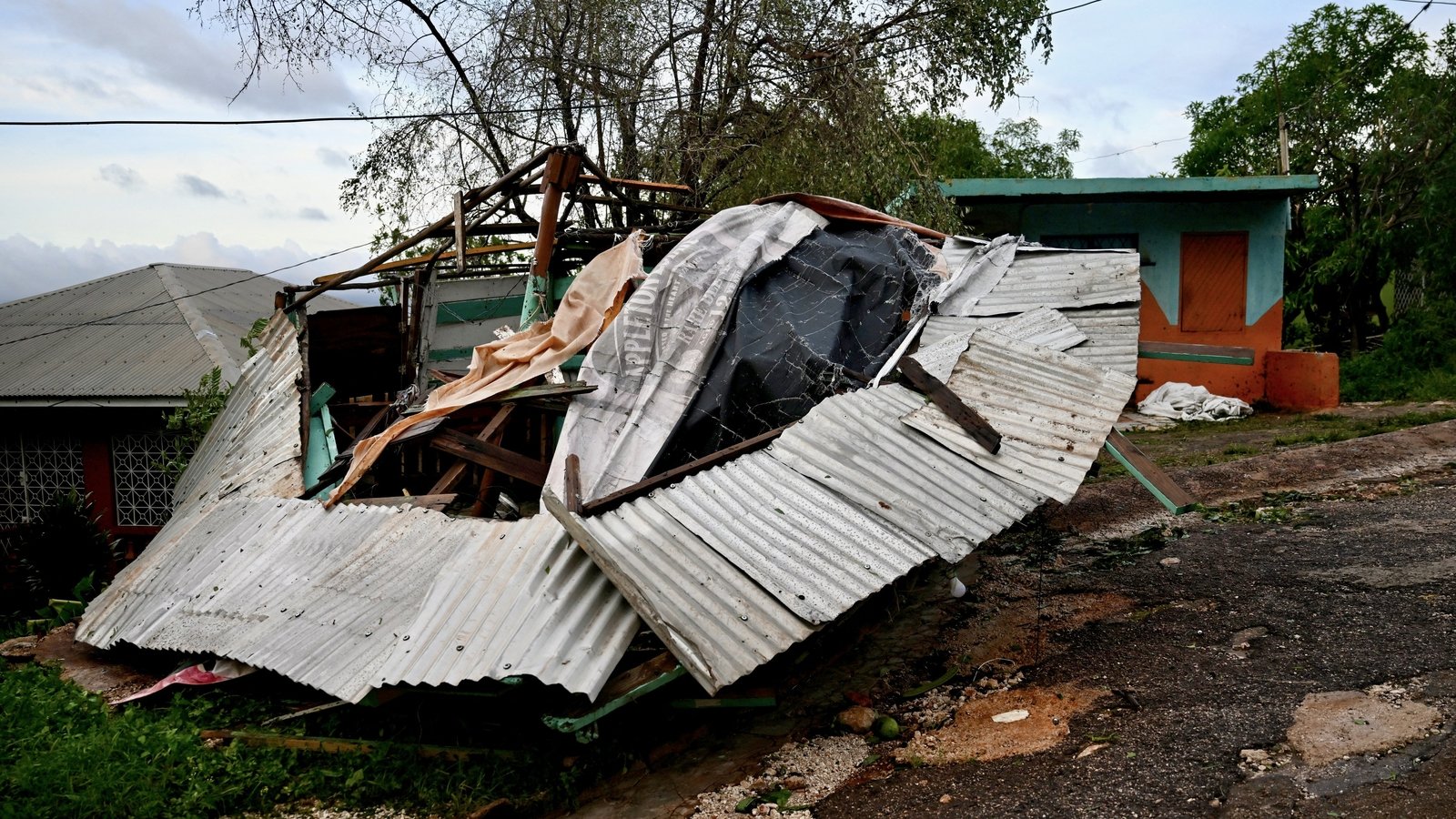Cubans waded through flooded houses today, and authorities in Haiti reported 20 dead as Hurricane Melissa blasted across the Caribbean after devastating swaths of Jamaica.
The storm made landfall in Cuba overnight, with the US National Hurricane Center (NHC) describing it as “extremely dangerous” even as it started to weaken.
“It has been a very difficult early morning,” Cuban President Miguel Díaz-Canel said on social media.
“Extensive damage, and Hurricane Melissa is still over Cuban territory. I urge our people not to let their guard down, to maintain discipline, and to remain safely sheltered.”
Residents in the east of the communist island struggled through flooded homes and inundated streets, with windows smashed, power cables downed, and roofs torn off.
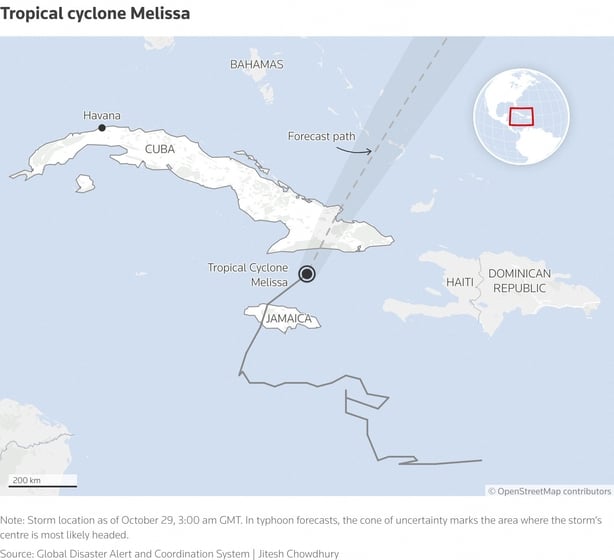
Map showing Tropical Cyclone Melissa’s location as of 29 October, 3.00 am GMT/Irish time
AFP reporters in the city of Santiago de Cuba reported that winds were intense this morning and streets were full of mud, tree branches, roof tiles, downed power poles and other debris.
The major hotel in the city had its glass windows shattered, and some roof parts brought down.
Hurricane Melissa had hit Cuba with maximum sustained winds of 195km/h, the NHC said, and warned of continued rains causing “life-threatening and potentially catastrophic flash flooding with numerous landslides”.
We need your consent to load this rte-player contentWe use rte-player to manage extra content that can set cookies on your device and collect data about your activity. Please review their details and accept them to load the content.Manage Preferences
‘Disaster area’
At least 20 people in southern Haiti, including 10 children, were killed in floods, according to civil defence agency head Emmanuel Pierre.
In the Dominican Republic, which shares the island of Hispaniola with Haiti, officials said that a 79-year-old man was found dead after being swept away in a stream.
Hurricane Melissa tied the 1935 record for the most intense storm ever to make landfall when it battered Jamaica yesterday, according to data from the US National Oceanic and Atmospheric Administration (NOAA).
Jamaican Prime Minister Andrew Holness declared the island a “disaster area” as residents faced more flooding and a risk of landslides.
Lisa Sangster, a 30-year-old communications specialist in Kingston, said her home was devastated.
“My sister… explained that parts of our roof was blown off and other parts caved in and the entire house was flooded,” she said.
Watch: Satellite footage shows Melissa crossing over Jamaica
Communications down
In the Cuban town of El Cobre, rescue workers attempted to reach 17 people, including children and elderly people, trapped by rising floodwaters and a landslide, according to state media.
“We are safe and trying to stay calm,” rheumatologist Lionnis Francos, one of those stranded, told the official news site Cubadebate.
“The rescuers arrived quickly. They called us, but couldn’t cross because the road is blocked.”
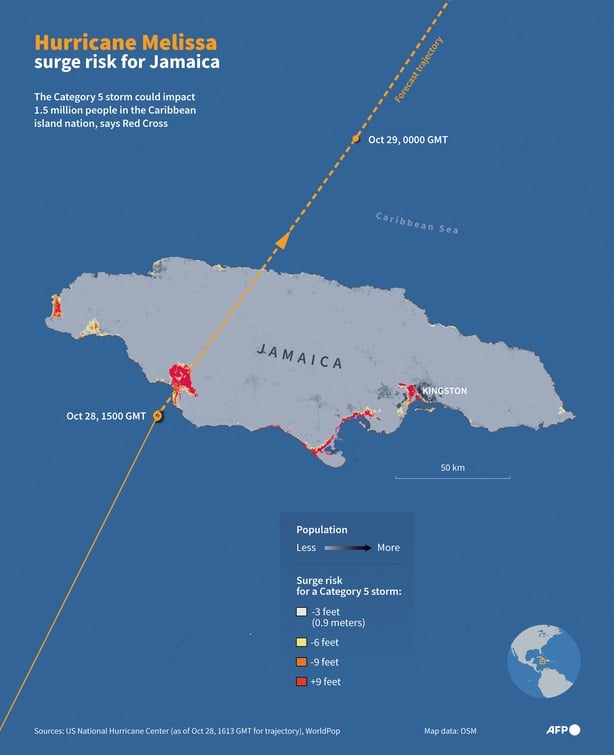
The full scale of Melissa’s damage is not yet clear. A comprehensive assessment could take days, with communications networks badly disrupted across the region.
Jamaican government minister Desmond McKenzie said several hospitals were damaged, including in Saint Elizabeth, a coastal district he said was “underwater”.
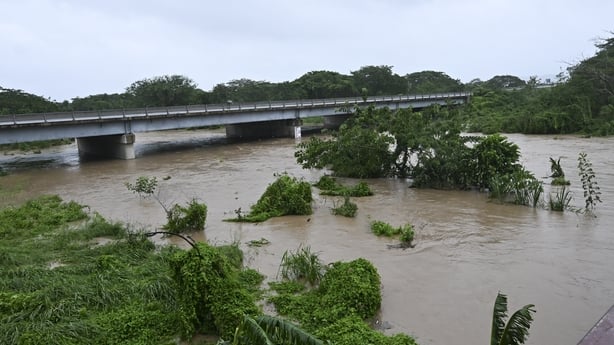
The Rio Cobre bursts its banks near St Catherine in Jamaica
Many homes were destroyed, and about 25,000 people sought refuge in shelters.
Mr McKenzie said no deaths had been confirmed in Jamaica, though situation reports were still coming in.
“It is not going to be an easy road, Jamaica. We have seen the extent of the damage. It is going to take a lot of time,” he added.
On Monday, officials in Jamaica said three people had died while preparing for the storm, cutting tree branches and working on ladders.
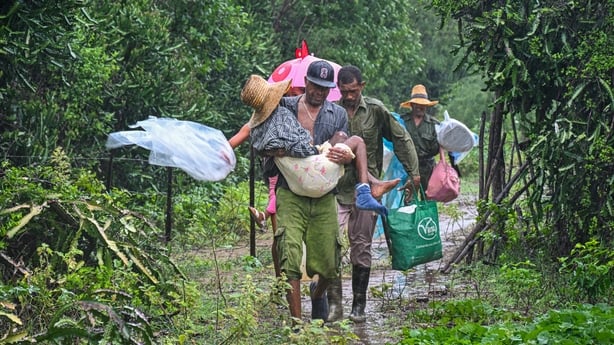
Residents evacuate ahead of the arrival of Hurricane Melissa in Santiago de Cuba, Cuba
Mathue Tapper, 31, from Kingston said those in the capital were “lucky” but feared for fellow Jamaicans in the island’s more rural western areas.
Due to climate change, warmer sea surface temperatures inject more energy into storms, boosting their intensity with stronger winds and more precipitation.
“Human-caused climate change is making all of the worst aspects of Hurricane Melissa even worse,” said climate scientist Daniel Gilford.
Watch: ‘Hurricane hunters’ tracked Melissa from the inside as it bore down on Jamaica
The Jamaican Red Cross, which was distributing drinking water and hygiene kits ahead of infrastructure disruptions, said Melissa’s “slow nature” exacerbated the anxiety.
The UN is planning an airlift of some 2,000 relief kits to Jamaica from a relief supply station in Barbados once air travel is possible.
Assistance is also planned to other impacted countries including Cuba and Haiti, UN spokesperson Stephane Dujarric told journalists.
Jamaican officials said around 25,000 tourists were in the country.
The Department of Foreign Affairs has urged Irish citizens to heed the instructions of local authorties.
